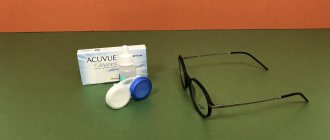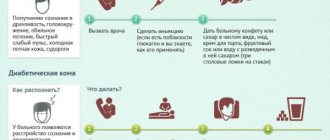I think there is no need to explain what the “lump in the throat” feeling is. Let's immediately figure out what to do with this feeling. But let's not confuse it with a swallowing disorder.
First of all, it would be good to contact an ENT specialist. We must first look into this throat and see what is inside. Perhaps this sensation is associated with an inflammatory process of the mucous membrane of the oropharynx or enlargement/inflammation of the palatine tonsils. In this case, after treatment and the inflammatory process subsides, the feeling of a lump in the throat will pass.
Where does the feeling of a lump in the throat come from?
The sensation usually occurs on the front of the neck.
The patient is concerned about the feeling of a lump in the throat, soreness, numbness and a feeling of a foreign body in the respiratory tract. There is a desire to swallow saliva, but a spasm that causes a feeling of a lump in the throat prevents this from happening. In many patients, the lumen of the esophagus narrows, which makes it impossible to eat normally - the bolus of food does not move towards the stomach, causing pain, salivation and vomiting.
What is a lump in the throat?
Many patients are bothered by a slight feeling of fullness in the throat, which does not cause severe discomfort or difficulty breathing. The feeling of a lump in the throat may occur for just a few seconds, or may last for several days in a row. However, the sensations can be more intense: a spasm of the larynx appears, which makes it difficult to breathe and causes a feeling of fear of death. This syndrome was described by Hippocrates, calling its nature “hysterical”³.
Possible risks
Due to the fact that these sensations are formed as a result of a breakdown of higher nervous activity, this leads to more profound changes. The feeling of a lump in the throat is only the first symptom of the formation of the disease. It is at the onset of the disease that it is easiest to stop and completely cure. Remember that no disease, neither mental nor somatic, stands still. Any disease will continue to develop until it is stopped. Only a complete and correct therapeutic program can stop progress and cure a person. Self-help or self-medication, or incorrect treatment, are dangerous and cause complications. Complications related to the psychogenic causes of the formation of the sensation of a lump in the throat include the following mental states.
Complications of feeling a lump in the throat
- Depression;
- Anxiety disorders;
- Panic attacks;
- Intrusive thoughts;
- Neuroses;
- Phobias;
- Substance addiction;
- Psychosomatic disorders;
- Sexual dysfunctions;
- Aggression and personality disorders;
- Other mental states.
There is no need to endure or be afraid to see a psychotherapist or psychiatrist. We provide treatment on an anonymous basis. You can always contact us anonymously and your data will not be passed on to third parties or government medical institutions. We guarantee your safety.
However, do not forget that complaints about a lump in the throat in 10% of cases are associated with possible physical changes. Such as neck injuries or somatic diseases.
Causes of a lump in the throat
The feeling of a lump in the throat can occur spontaneously during a certain emotional state of the patient: when he is in a stressful situation or, for example, feels proud, sad, etc. A lump in the throat can also occur due to purely physiological reasons, for example, when sitting for a long time with your face down.
Other reasons include the appearance of a lump in the throat due to various pathologies, each of which deserves separate consideration.
Scheme 1. Causes of the sensation of a lump in the throat. Source: Medportal
Nervous stress
In most cases, the sensation of a lump in the throat occurs as a result of nervous tension. According to the International Classification of Diseases, 10th revision (ICD-10), the feeling of a lump in the throat belongs to the group of neurotic and somatoform disorders associated with stress.
It occurs in people prone to depression or suffering from nervous tension (both at work and at home). Sometimes in women this symptom occurs during premenstrual syndrome against the background of exacerbation of anxiety and irritability.
Com and psychosomatics
In medicine there is such a thing as psychosomatics - it means a close relationship between a person’s psychological state and the health of his body. Often, a lump is attributed specifically to psychosomatic manifestations. In this case, the feeling is of short duration - as a rule, the symptom goes away within a few minutes or even seconds.
Gastroesophageal reflux disease
When a patient experiences reflux (the release of stomach contents back into the esophagus), gastric juice, which includes hydrochloric acid, irritates the walls of the esophagus, which causes spasm and a feeling of a lump in the throat¹.
Skeletal muscle diseases
Patients suffering from skeletal muscle diseases such as myasthenia gravis and myotonia may experience spastic phenomena (spasms) in the throat muscles, which provoke a foreign body sensation.
Zenker's diverticulum
In a patient, in the initial part of the esophagus, which borders the pharynx, a protrusion of the mucous membrane occurs through the smooth muscle of the esophagus. In this case, the sensation is no longer subjective, since the protrusion itself acts as a foreign body, that is, a coma.
Oncological neoplasms
As in the previous case, the sensation of a foreign body is no longer subjective. With neoplasms in the throat area, the feeling of a coma is not paroxysmal in nature, as with nervous overstrain - it haunts the patient constantly.
Eosinophilic esophagitis
This disease is an inflammation of the walls of the esophagus, most often occurring as a consequence of allergic reactions. A lump in the throat occurs due to pain in the esophagus, which is caused by inflammation and reflux.
Osteochondrosis
This disease is accompanied by degenerative changes in the cartilage and bone tissue of the spine. This, in turn, leads to compression of the radicular nerves, which are responsible for the innervation of the larynx and pharynx, that is, their connection with the central nervous system. As a result, paresthesia may occur - distorted sensations, which include a lump in the throat.
Thyroid diseases
The feeling of fullness and the presence of a foreign body in the throat often occurs with diffuse or nodular goiter. With thyroiditis, the tissues of the thyroid gland become inflamed, so the feeling of a lump is accompanied by pain.
ENT diseases
Due to inflammation with sore throat, tonsillitis and pharyngitis, a sensation of a lump in the throat may also occur. In addition to this, the patient is also bothered by a sore throat and painful sensations.
Sjögren's syndrome
This is a disease of autoimmune origin, in which the body perceives its own cells as foreign and produces antibodies that attack healthy tissue. This, in turn, leads to inflammatory phenomena.
Sjögren's syndrome affects the lacrimal and salivary glands. The feeling of a lump in the throat occurs as a result of inflammation and dryness in the mouth and larynx. Patients usually complain of soreness in the larynx and that a lump in the throat prevents them from swallowing food. The disease develops mainly in women over 30 years of age.
Allergy
In some people, a feeling of coma occurs as a result of allergic reactions due to swelling of the throat.
Food poisoning
In this condition, the patient often experiences spasms of the gastrointestinal tract and esophagus. This may make it feel like a lump in your throat is making it difficult to swallow.
Important! Most often, complaints of a lump in the throat come from adult patients aged 41–50 years. However, the feeling of a lump in the throat is not always associated with any disease. Doctors note that during a medical examination, 46% of practically healthy patients complained of this feeling.
Somatic causes
Usually this group of reasons is confirmed or excluded first.
Inflammatory processes in the throat
Any inflammation is accompanied by tissue swelling, which is felt like a lump. The inflammatory process can be both acute and chronic. It accompanies pharyngitis, follicular tonsillitis, laryngitis. Sometimes it happens that the condition worsens and paratonsillitis, abscesses of the root of the tongue or epiglottis, or parapharyngeal abscess develop. The danger is severe swelling, which can prevent oxygen from entering the airways.
Tumor
Both benign and malignant tumors can compress the throat. And if in the first case, treatment can be limited to conservative methods, and the outcome is always favorable, then this cannot be said with the development of a malignant tumor. Therefore, the sooner the problem is identified, the faster and, most importantly, the more successfully it will be resolved. Sometimes, with an asymptomatic course of the disease, the feeling of a lump in the throat may be the only sign that is simply unacceptable to miss. But even in the case of a benign tumor, breathing becomes difficult, and as the tumor grows, it is completely blocked. Typically, the location of the tumor is the trachea, oropharynx or larynx.
Thyroid dysfunction
The thyroid gland is the first to respond to iodine deficiency in the body. It increases in size and compresses the throat. This disease is called goiter or Graves' disease. The doctor can make the correct diagnosis during the initial examination. In addition, enlargement of the gland in the later stages is accompanied by a decrease in appetite, weight loss, and protrusion of the eyeballs. But a more accurate diagnosis is established based on the results of tests and ultrasound.
Other diseases of the thyroid gland include its inflammation, as well as an increase in the secretion of thyroid hormones. These diseases are also characterized by the sensation of a foreign object in the throat.
- What is a “lump in the throat” and how to get rid of it
A timely correct diagnosis will prevent possible dangerous complications.
Osteochondrosis
Often a lump is felt in the throat if problems appear in the cervical spine. This usually occurs with osteochondrosis. The reasons for this condition are overeating, physical inactivity and other bad habits. With osteochondrosis of the cervical spine, pain appears in the back, neck, and head. Sometimes the disease is accompanied by nausea, vomiting, and pressure fluctuations. Only a doctor can make a diagnosis. Treatment is long and depends on the patient’s perseverance and discipline. Gymnastics and special massage are useful. Correct posture is of great importance. To sleep, you need to purchase an orthopedic mattress and pillow. In severe cases, medications are prescribed to relieve pain symptoms.
Problems with the gastrointestinal tract
There is a lump in the throat that does not go away for one or another gastroenterological reason. If such a symptom occurs immediately after eating, then the likelihood of gastrointestinal diseases is high. Usually the patient has previously noted other symptoms: heartburn, belching, sour taste in the mouth, pain in the stomach.
Reflux
The cause of a lump in the throat can be reflux or gastroesophageal disease. As a result of this chronic disease, acidic stomach contents are thrown into the esophagus. A person suffers from bloating, belching, and nausea. Usually, first of all, the doctor recommends changing your diet: eliminating chocolate, coffee, soda and other irritating foods. It is important to lose weight and follow a meal schedule (dinner should be no later than 2 hours before bedtime).
reflux
It still doesn’t hurt everyone to know that at different times of the day, the absorption of certain products occurs with different intensities. In general, gastric motility slows down in the evening. Medicines are also prescribed to reduce acidity.
Esophageal hernia
Reflux, and therefore a lump in the throat, can be caused by a hiatal hernia. This ailment is provoked by excess body weight, constipation, severe cough, and heavy lifting. Sometimes the cause of a hernia can be stress, which causes muscle spasm. In this case, you can simply drink a glass of warmed milk with a teaspoon of honey.
A hernia may also cause chest pain. Therefore, the doctor orders an electrocardiogram to rule out heart damage. Sometimes hiccups appear along with a lump in the throat.
Injuries
The cause of the sensation of a foreign object in the throat may be injury to the esophagus or larynx. The esophagus is damaged by rough food or during gastroendoscopy. Typically, with these types of injuries, symptoms resolve within about a week without special treatment.
Allergic reactions
A lump in the throat is dangerous if it is caused by Quincke's edema. There is a rapid increase in swelling, which can lead to suffocation. In this case, time goes by seconds. Only emergency administration of antihistamines can save the patient.
- It’s like there’s a lump in my throat: what could it be and how to treat it?
Other reasons
It should be noted that the sensation of a lump in the throat can be caused by unlikely, but still possible reasons:
- Parasitic organisms. Everyone is accustomed to thinking that the habitat of parasites is the intestines. However, these little buggers can lay eggs in the brain, eyes and finally the throat. A person feels this as a foreign body.
- Diseases of the cardiovascular system. The cause is very rare, but it cannot be ruled out, especially if there are other symptoms characteristic of heart disease, such as chest pain.
- Increased body weight. A large layer of subcutaneous fatty tissue can press on the throat like a goiter.
- Foreign object. Surprisingly, the sensation of a foreign object in the throat is caused by... a foreign object. It could be a stuck bone, a pill, or something else.
What to do if you have a coma in your throat? How to fix it?
The feeling of a lump in the throat makes you nervous.
Photo Source: Krakenimages.com / Depositphotos It is important to try to determine under what circumstances this feeling occurs and how long ago it was noticed. Even before going to the doctor, you can use the instructions below.
How to make sure that a lump in your throat is not a consequence of your lifestyle?
- Determine if there have been any stressful situations at work or at home recently, and try to minimize them.
- Try to understand if there is tension in the neck muscles due to a long sitting position facing down. If your job requires a sedentary lifestyle, you need to take short breaks every 15-20 minutes. In this case, it is advisable to walk a little and make several turns of the head alternately to the right and left.
- Fitness activities can also contribute to the appearance of a lump in the throat. You need to reduce physical activity and see if the feeling goes away.
- You need to temporarily give up smoking and alcohol and not strain your vocal cords (do not sing, do not shout).
- You should switch to fractional meals in small portions at least 5 times a day. Avoid fried, salty, smoked and spicy foods. It is not recommended to lie down or exercise after eating.
- See if the sensation arises in one specific place. This may be the result of an allergic reaction, such as to dust or wool. In this case, you need to limit contact with the allergen.
- Female patients should pay attention to whether this sensation appears exclusively before the onset of the menstrual cycle against the background of a heightened emotional state.
If the tips described above do not help you cope with the feeling, you should consult a specialist.
Which doctor should I contact?
Since the causes of a lump in the throat are different, you can first consult a general practitioner. Based on complaints and physical examination data, he will prescribe appropriate diagnostic tests and refer the patient to a specialized specialist.
You can also try to determine on your own when this unpleasant feeling arose and what its symptoms are, and then visit the appropriate specialist:
- neurologist - if the feeling occurs against the background of fatigue, insomnia or nervous stress, is paroxysmal in nature, and its duration does not exceed several minutes;
- otolaryngologist - if, in addition to the sensation of a foreign body, the patient is bothered by pain when swallowing, redness of the throat or fever;
- gastroenterologist - the patient is worried about heartburn, sour belching, a feeling of heaviness after eating, painful sensations in the stomach or esophagus, and the feeling does not go away for several days;
- endocrinologist - if the patient also experiences symptoms such as hoarseness, attacks of dry cough, decreased performance and libido, difficulty breathing, attacks of dizziness, decreased or increased salivation, gastrointestinal disturbances;
- oncologist - for prolonged weakness, increased fatigue, weight loss and a feeling of fullness in the neck that does not go away within several days;
- a vertebrologist or neurologist - if the patient is also concerned about pain in the spine, headaches, blurred vision, numbness of the extremities, poor sleep, a feeling of pins and needles in the upper and lower extremities.
Diagnosis of a lump in the throat
Instrumental diagnosis of a lump in the throat.
Source Photo: macniak / Depositphotos Diagnostic tests used for PCG depend primarily on the data obtained from collecting complaints and the characteristics of clinical symptoms - all of this together allows the doctor to make a preliminary diagnosis.
To confirm this diagnosis, as well as for the purpose of differential diagnosis (that is, excluding other pathologies with a similar clinical picture), the doctor prescribes a set of diagnostic tests. However, there is no uniform examination tactic. When prescribing tests, the doctor sets himself the task of excluding pathologies - tumors, ENT pathologies, changes in the volume of the thyroid gland and others.
Investigations for coma in the throat
Research methods depend on the cause. The simplest situation is with nervous stress - the doctor, based on the examination data and the patient’s complaints, will be able to get an idea of the mental state of his patient. In other cases, the patient may be prescribed blood tests, bacteriological cultures, ultrasound, MRI, radiography and other studies - not necessarily at the same time, it all depends on the preliminary diagnosis.
Blood tests
The doctor usually orders one or more tests. Depending on the type of study, the patient’s blood is taken from a finger or from a vein.
General analysis
The most common blood test, for which blood is taken from a finger (less commonly, from a vein). This study allows you to get an idea of the level of hemoglobin, red blood cells, platelets, white blood cells and ESR. If any of these indicators deviate from the norm, you can determine:
- the presence of inflammatory processes,
- anemia,
- blood clotting disorder.
The study is carried out in the morning on an empty stomach. You should not drink alcohol 2-3 days before the test, and a few hours before the test you should refrain from smoking.
Testing for tumor markers
As can be understood from the name, this test is prescribed when the development of tumor processes is suspected, when the patient experiences a constant increase in body temperature, pain, weakness, loss of appetite and weight loss. Tumor markers are a special type of proteins that are secreted by tumor cells.
Analysis to determine TSH levels
The level of thyroid-stimulating hormone (TSH) increases or decreases when the thyroid gland is not functioning properly. The basis for prescribing this study, in addition to the feeling of a lump in the throat, may be changes in appetite, nervousness, sleep disturbances, and deterioration in the condition of hair and skin. In rare cases, TSH levels increase in pregnant women.
IgE test
The study is aimed at identifying the level of IgE, that is, immunoglobulins E, which are antibodies whose level in the blood plasma of healthy people is very low. However, with allergic reactions and eosinophilic esophagitis, it increases.
Blood sampling for the above studies is carried out from a vein. A week before the test, it is advisable to limit physical activity and alcohol intake. The test is taken on an empty stomach - at least 8 hours must pass between the time of blood sampling and the last meal. It is important to refrain from smoking 1–2 hours before the test.
Sowing for microflora
Prescribed for inflammatory diseases of the throat. . The purpose of culture is to identify the causative agent of the infectious process and determine its sensitivity to antimicrobial drugs. The procedure is short and painless: the doctor uses a sterile swab to make a swab from the throat. There is another way: the patient rinses his mouth with a saline solution, and then spits it into a sterile container.
X-ray of the spine
This hardware test is prescribed to a patient if osteochondrosis is suspected. Using an X-ray of the spine, the doctor gets an idea of the condition of the bones and intervertebral joints. If an intervertebral hernia is suspected, an MRI may be prescribed as an additional study.
Esophagoduodenoscopy
This is an endoscopic examination of the esophagus, which is prescribed for suspected eosinophilic esophagitis and gastroesophageal reflux disease. The patient swallows a thin endoscope, with which the doctor evaluates the condition of the esophagus. In addition, during esophagoscopy, if necessary, a biopsy sample (a small fragment of tissue) is taken for histological examination. The procedure is unpleasant, but short. It causes the greatest discomfort in patients with a pronounced gag reflex. You should refrain from eating 6–7 hours before the test.
Salivary gland biopsy
Used in the diagnosis of Sjögren's syndrome. Biomaterial is collected not only from the salivary glands, but also from the inner mucous membrane of the cheeks. Using a syringe with a thin long needle, a puncture is made and biomaterial is collected for subsequent histological examination. This diagnostic procedure is performed under ultrasound guidance using local anesthesia. It is prescribed relatively rarely, since in most cases a blood test for autoantibodies allows a specialist to confirm or refute a preliminary diagnosis.
Ultrasound of the thyroid gland
Prescribed for the diagnosis of diffuse goiter, thyroiditis and other pathologies of the thyroid gland. This is an absolutely painless examination that does not require special preparation from the patient: you can eat, exercise, and even smoke before the ultrasound.
Contrast radiography of the esophagus
This study is relevant when diagnosing Zenker's diverticulum. With its help, the specialist gets an idea of the localization of the protrusion, as well as its size and shape. Before the x-ray, the patient is asked to drink a glass of barium suspension to improve contrast. This diagnostic procedure requires special preparation: you should not eat food 6–7 hours before the test.
Principles of treatment
Of course, it will not be the lump in the throat that will be treated, but the disease itself that caused this unpleasant sensation. And the therapy will vary depending on the disease.
Endocrine diseases
If the lump in the throat is caused by endocrine disorders, the endocrinologist will prescribe iodine preparations to stabilize hypothyroidism or hormones according to a special regimen for autoimmune thyroiditis.
Vertebral disorders
For osteochondrosis or disorders associated with insufficient nutrition of the brain, manual therapy, massage, acupuncture, regular performance of a special complex of physical therapy, and a change in lifestyle to a more active one can be used.
Oncology
Rapidly developing tumors in the throat are removed surgically, then chemotherapy is required - treatment is prescribed by an oncologist depending on the type of tumor.
Colds
For inflammatory diseases of the larynx (tonsillitis, laryngitis, pharyngitis and others), antibacterial or anti-inflammatory therapy is prescribed. A therapist can handle this very well. More complex throat diseases may require consultation with an otolaryngologist.
Psychogenic factor
Treatment of a lump in the throat with neurosis, vegetative-vascular dystonia and other diseases of a psychogenic nature consists of reducing the stress on the nervous system, prescribing sedatives and antidepressants. Each case is considered individually, depending on the complexity of the patient’s condition.
Gastrointestinal diseases
A gastroenterologist deals with digestive problems. He will prescribe a gastroenteroscopy and, based on its results, prescribe the necessary medications and give recommendations on diet and proper nutrition.
Treating a lump in the throat
Lack of stress is an important fact when treating a lump in the throat.
Source Photo: IgorVetushko / Depositphotos After clarifying the diagnosis, the specialist prescribes a comprehensive treatment for the disease that causes the sensation of a lump in the throat. Therapeutic measures combine an impact on both the root cause of the disease and the elimination of associated symptoms.
Nervous tension
First of all, it is necessary to eliminate the cause of stress. If it is due to the specifics of the job, the patient is recommended to move to a position associated with less nervous tension. It is important to normalize your sleep schedule (at least 8.5 hours a day). If necessary, the doctor prescribes sedatives, antipsychotics and antidepressants.
Gastroesophageal reflux disease
It is recommended to limit the consumption of alcohol and confectionery products to prevent weakening of the lower esophageal sphincter tone. For the same purpose, it is advisable to quit smoking. Among medications, antacids are recommended, that is, drugs that reduce the secretion of gastric juice (hydrotalcite, omeprazole).
Skeletal muscle diseases
Priority treatment methods are massage, physical therapy and physiotherapy (electrophoresis, paraffin therapy). It is important to avoid hypothermia and ensure regular physical activity. In severe cases, the doctor may prescribe immunosuppressive therapy (prednisolone, cyclophosphamide, human immunoglobulin).
Zenker's diverticulum
In the initial stages, you can do without surgery: the patient should switch to fractional meals (at least 5 meals a day). You should also give up the habit of lying down after eating. In later stages, surgical treatment is indicated. This is done in two ways:
1. Classic surgical. The most common method in which the protrusion is corrected and sutured to prevent recurrence.
2. Endoscopic. This technique is also known as intraoperative video endoscopic transillumination. The operation is performed through an endoscope without tissue dissection. The advantage of endoscopic correction of protrusion is that after this manipulation the patient is left with no scars².
Oncological neoplasms
The main method is surgical removal of the tumor. Radiation therapy is used as an adjuvant treatment to destroy cancer cells. Chemotherapy is used to prevent relapses. As part of drug treatment, targeted therapy is prescribed, which is aimed at the targeted destruction of cells that provoke malignant processes.
Eosinophilic esophagitis
First of all, it is necessary to exclude highly allergenic foods (milk, eggs, seafood, nuts). Local corticosteroids, which are available in the form of sprays (fluticasone, budesonide), are also indicated. They are sprayed into the mouth and then swallowed.
To reduce the production of gastric juice, H2-histamine blockers (ranitidine, nizatidine) are prescribed. To increase the tone of the esophageal sphincter, prokinetics (metoclopramide, domperidone) are indicated.
Osteochondrosis
As with muscle diseases, the main treatment is massage and physical therapy. It is very important not to neglect regular physical therapy sessions. If necessary, the course of treatment is supplemented with non-steroidal anti-inflammatory drugs, vasodilators and chondroprotectors - medications that help improve the condition of cartilage and joints.
Thyroid diseases
As part of drug therapy, propylthiouracil and thiamazole are indicated. The action of these drugs is aimed at improving the functional state of the thyroid gland. In severe cases of the disease, the doctor prescribes glucocorticoids (prednisolone). For diffuse and angular forms of goiter, preference is given to surgical treatment. The patient also needs to give up bad habits and normalize sleep (sleep at least 8.5 hours a day).
ENT diseases
One of the main mistakes made by patients suffering from tonsillitis or pharyngitis is self-treatment using folk remedies. For these diseases, the use of antibiotics (penicillins and cephalosporins) is indicated. In addition, you should gargle with antiseptic solutions every hour. It is strongly recommended to quit smoking, alcohol and spicy foods for the entire period of treatment.
Sjögren's syndrome
To date, no pathogenetic treatment has been developed. This means that therapeutic measures for Sjöngren's syndrome are aimed at eliminating the symptoms, and not the cause of the disease itself. To relieve dry mouth that makes swallowing difficult, drinking frequently and chewing sugar-free gum are recommended. To enhance salivation, pilocarpine and cevimeline hydrochloride can be used (these drugs are contraindicated in patients with glaucoma and bronchospasm). It is also important to avoid taking antihistamines, which can worsen dry mouth.
Allergy
First of all, it is necessary to identify the allergen and eliminate all contact with it. The patient is prescribed a hypoallergenic diet (fried, smoked, salty, canned foods, chocolate, citrus fruits are excluded from the diet) and regular good sleep. Wet cleaning of the house must be done at least once every 2 days. If possible, you should get rid of carpets and curtains that accumulate dust. The patient is advised to take folic acid to increase the body's defenses. The phenomena of sensitization (increased sensitivity to allergens) are eliminated by antihistamines based on chloropyramine, cetirizine and fexofenadine.
Food poisoning
For mild to moderate poisoning, help is allowed at home. First you need to drink 1-2 liters of pale pink potassium permanganate or a 2% solution of baking soda. This will help induce vomiting and provide gastric lavage. Activated carbon is used to remove toxic substances from the intestines (at least 2 tablets per 10 kg of body weight). In severe cases, when these measures do not give the expected result, it is recommended to consult an infectious disease specialist.










